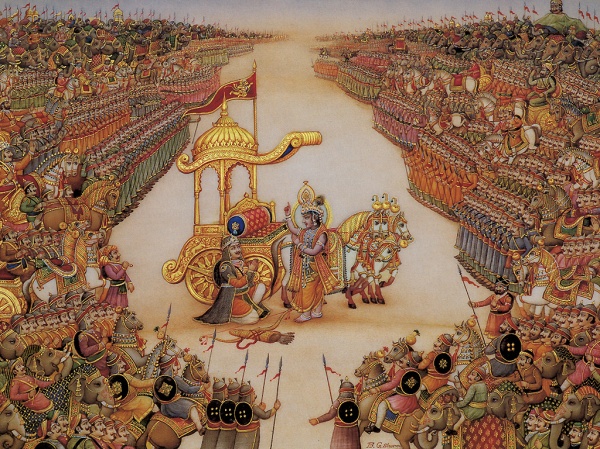D.D. Kosambi, the Indian Marxist historian, once dismissed the Bhagavad Gita as “700 fratricidal verses.” And while this text has been extolled by champions of nonviolence such as Thoreau and Gandhi, Kosambi does have a point: Krishna – God himself who has taken on human form – urges Arjuna, the reluctant warrior, to fight in battle against his teachers, cousins, and friends. Why? Because his dharma requires him to do so. Arjuna must act in this battle in order to preserve the order of the universe, even if it means slaughtering his kin. Continue reading
Tag Archives: ethics
Dharma: The First Lesson
A previous post has some thoughts on the idea of dharma and its importance within Hinduism and Hindu ethics. This post will sketch out a lesson plan I do with students in the hopes of introducing them to this complex idea.
At the start of class, I make a drawing on the board with four columns, asking the students to copy it into their notes. Then I ask them to think of 5-10 examples (depending on age of the students) of responsibilities for each of the following individuals. Usually I go with something like these four:
You [The students] | Mr. H [me] | Your Dentist | President Obama/Head of School*
Dharma: An Introduction
“Dharma is subtle.”
This quotation recurs throughout the Mahabharata, one of the two great epics in Hinduism. (The Ramayana is the other.) Dharma is a Sanskrit word that is often translated as duty or responsibility. It is probably the central ethical idea in Hinduism. It’s also rather complex.
The word dharma is often translated as “duty,” and this definition is a pretty good start. However, there’s more nuance to the term: dharma refers to duties/responsibilities that a person has to uphold the functioning of the communities in which they are enmeshed. Dharma is action that upholds the world. As such, it is linked quite closely to a person’s identity: in my case, I have specific dharmas as a son, a partner, a teacher, a colleague, a tenant, and so on. Performing my dharma, then, is a matter of acting in a way that preserves and upholds the social orders I am a part of: my family, my classroom, my workplace, my home – my communities. Continue reading

